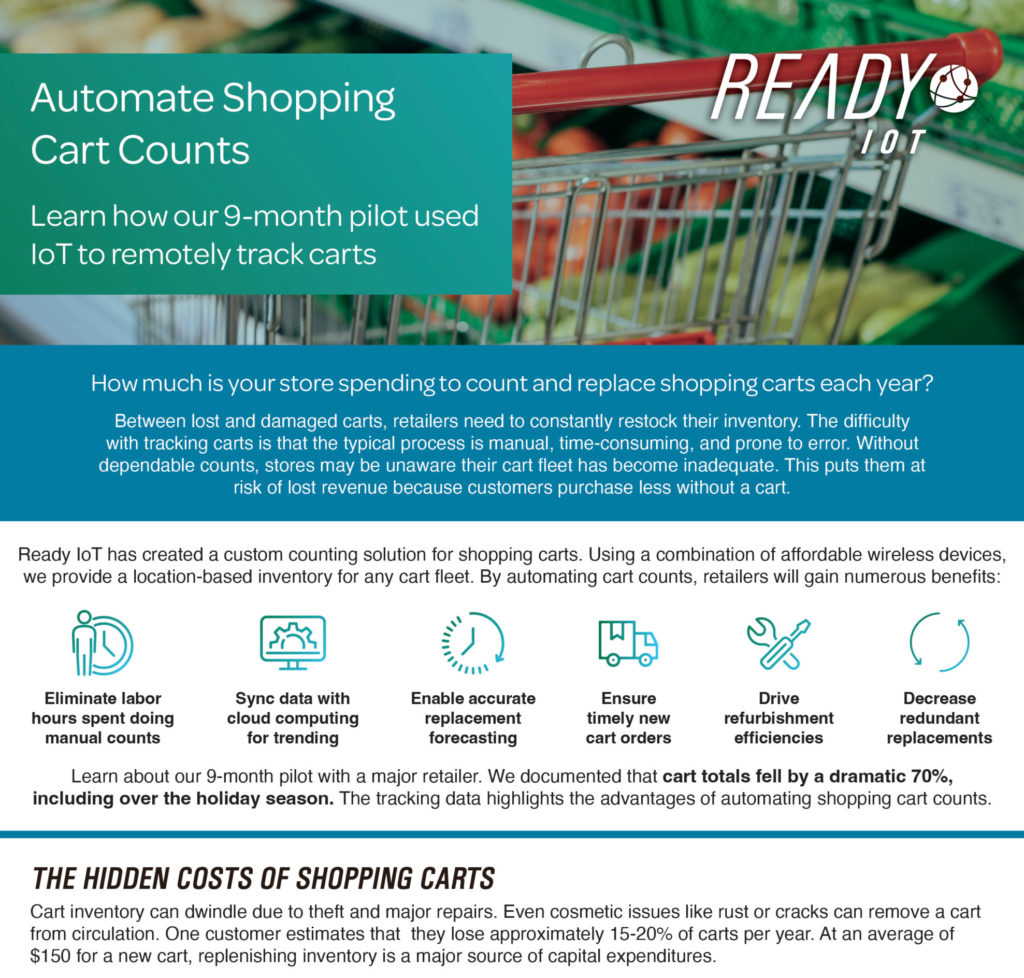One of the most essential store amenities is the humble shopping cart. Yet carts have a habit of disappearing due to damage, theft, or wind. A dwindling inventory isn’t just frustrating for guests – it’s hurting your bottom line. At an average of $150-250 for a new cart, maintaining your fleet is a major expense.
There are five ways shopping carts are cutting into your profits: labor, lost revenue, unnecessary replacements, missed repair opportunities, and municipal fines.
The good news is that these costs are avoidable. It starts with replacing manual and inaccurate cart counts with automated tracking. With the right data, you can make smart inventory decisions that prevent these expenditures.
1) Hourly Labor
Counting carts is a tedious and costly task. Let’s do the math. We’ll estimate it takes 2 hours per month to conduct a count. This needs to be done after hours, so factor in overtime for a qualified technician at $200 per hour. You’re looking at $400 per month just for someone to catalog carts. When you multiply that monthly amount across a calendar year, it comes out to $4,800 in labor alone – ouch.
| Hourly Overtime Cost for a Qualified Technician | Monthly Hours Spent on Manual Counts | Cost Per Month of Manual Counts | Total Cost Per Year of Manual Counts |
| $200 | 2 | $400 | $4,800 |
Keep in mind these figures are for a single store. This expense increases significantly for a chain or franchise. A local retailer with 12 locations could spend close to $58,000 a year on this rote activity. Stretch that to a regional chain with 200 stores and the dollar figures start to approach $1 million in labor. A national brand with 2,000 locations – project a cool $9.6 million.
2) Lost Revenue
This is a harder one to quantify, but let’s go with the assumption that guests using a cart have a higher total than a basket or just their hands. A cart allows them to select a greater volume of items as well as large products with a premium price tag. The general result is that a cart generates a larger final bill.
But what happens when there are no carts available? A guest might downsize their purchases for that trip, with no guarantee they’ll come back a second time. They might be so irritated that they abandon their visit altogether. Either scenario equals lost revenue.
Our advice – take the average ring at your store and that’s the value of always having a cart available for every shopper.
3) Surplus Carts
The flip side of not enough carts is having too many carts. That’s right – you could be wasting money on carts you don’t need. At an average of $150 per new cart, those extra purchases start to add up. Even a modest surplus of 10 carts could lead a store to spend an unwarranted $1,500 in just one year.
| Individual store fleet | 15% average carts lost per year | Accurate replacement of 30 x $150 per new cart | Inaccurate replacement of 40 carts x $150 per new cart | Total wasted on surplus carts |
| 200 carts | 30 carts to replace | $4,500 | $6,000 | $1,500 |
4) Missed Reclamation
Not every damaged cart needs to be replaced. Many can be refurbished and put back into circulation, significantly extending their life. It’s a better option to invest $50 on repairs than $150 for a new cart.
The problem is that without an accurate cart count, you can’t answer the question of how many carts are lost, permanently broken, or waiting for salvage. Damaged carts are often set aside in a back room, making it easy to miss them during a manual count. If no one tracks them down, they’ll end up being replaced at a 65% higher cost than repairing.
5) Municipal Fines
Cart litter is a growing problem – one that cities are trying to solve by imposing fines. Every abandoned cart found off premise is ticketed. The fee is $100 on average – almost the price of a new cart. Some municipalities even add a daily storage charge until the cart is retrieved, such as $5 per day in Dartmouth, MA.
Accurate tracking is the first step retailers can take to combat this nuisance. You can’t recover what you don’t know is lost. A dwindling cart inventory is a clue that theft might be on the rise.
Finally, don’t discount the cost of customer satisfaction. Guests can literally walk away when there are no carts, especially during peak hours and holidays. A chronic cart shortage also makes it more tempting for a customer to shop at a competitor, lowering your brand reputation in the process.



